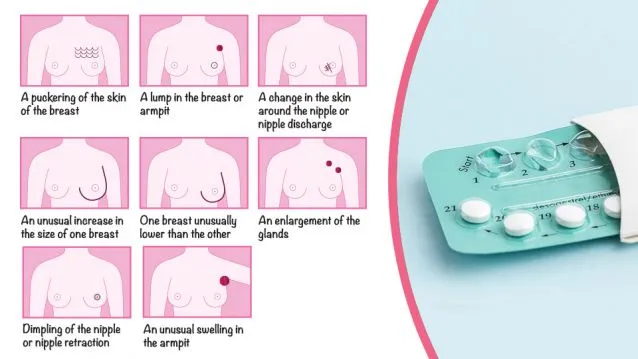If you believe modern-day birth control is safer than the pill of yesterday, you’d be wrong. Breast cancer is on the rise in both the developed and developing world, says the World Health Organization. And the reason could be linked to hormonal birth control.
Contraception options such as the pill, injections or IUD have always come with health risks. But now, according to a large study, women who rely on these contraceptives are at a higher risk of developing breast cancer.
Twenty percent higher risk of developing breast cancer
A study from the University of Copenhagen followed more than one million Danish women for more than a decade. Researchers found that breast cancer risk increased the longer a woman had been taking hormonal contraceptives. In fact, the average risk increased by 20 percent among women currently using hormonal birth control — even recent users.
The study, published in the New England Journal of Medicine, found that for every 100,000 women, 13 additional breast cancer cases were reported. So, for every 100,000 women using hormonal birth control, there are 68 cases of breast cancer. And, there are 55 cases a year for non-birth control users.
Sure, that may seem like a small number, but it’s actually quite significant. About 800 million women are projected to be using contraception by the year 2030, according to the United Nations.
Progestin may be the reason behind cancer risk
A link between birth control pills and breast cancer was previously established years ago. But this is the first study to actually examine the risks associated with “modern-day” birth control in a large population.
The study also found that there are few differences in risks between various types of birth control. That means women can’t protect themselves by simply opting for implants or intrauterine devices that release a hormone directly into the uterus. The research also found that the hormone progestin — used in modern birth control — may be the reason behind breast cancer risk.
Natural birth control may be better
Perhaps it’s time for a more natural approach like condoms, a diaphragm or the withdrawal method. You might also consider using the calendar-based method to estimate the likelihood of fertility.
However, the risk of developing breast cancer is relatively high in the Western world with or without birth control, thanks to diet and lifestyle choices. Therefore, you must be aware of what’s happening with your body at all times. Moreover, be on guard for the early warning signs of breast cancer.
Secret signs of breast cancer
So far, one of the best breast cancer screening methods is yearly or bi-yearly mammography screening. Mammograms are given routinely to healthy people even if they are not suspected of having cancer. Their purpose is to detect breast cancer before symptoms develop.
But mammography screening is very costly for those who are uninsured. Yet, early detection improves breast cancer outcome and survival. The solution? Self-examination for early detection.
Know these early warning signs of breast cancer
- Lump: Most women understand that the first, and most common, sign of breast cancer is a lump under the breast. But a lump alone does not predict cancer. Your lump could be benign and harmless. Or confused with a cyst. In fact, breast cysts are quite common. If you develop a lump in your breast, have it checked by your doctor immediately.
- A lump or thickened skin: A lump or thickened area in the breast or in the underarm should also be assessed by a doctor.
- Change in size and shape of breasts: If you experience a change in size or shape of one or both breasts, this could be a warning sign.
- Pain: If you feel pain in either breast or armpit that is unrelated to your period, speak with your doctor.
- Discharge: Any discharge coming from either nipple — bloody or milky — when not breastfeeding should be checked by your doctor right away.
- Dimpling: Dimpling or sunken skin on the breasts, often referred to as “orange-peel,” should be checked.
- Rashes and redness: Rashes around the nipple area, or red and enlarged lymph nodes under the arms, may be a sign of breast cancer.
Even if you feel fine, check for lumps!
Even if you feel fine, don’t have a lump, have no family history of breast cancer and are not taking hormonal contraceptives, perform a breast self-exam regularly. And do it at least once a month, suggests Dr. Susan Greenstein Orel for breastcancer.org. Moreover, examine yourself several days after your period ends.
Mammograms can help you to detect cancer before you actually feel a lump. But breast self-exams will help you to be more familiar with how your breasts normally look and feel. Remember: 40 percent of diagnosed breast cancers are detected by women, just like you, who feel a lump and then head to the doctor’s office.
— Katherine Marko

